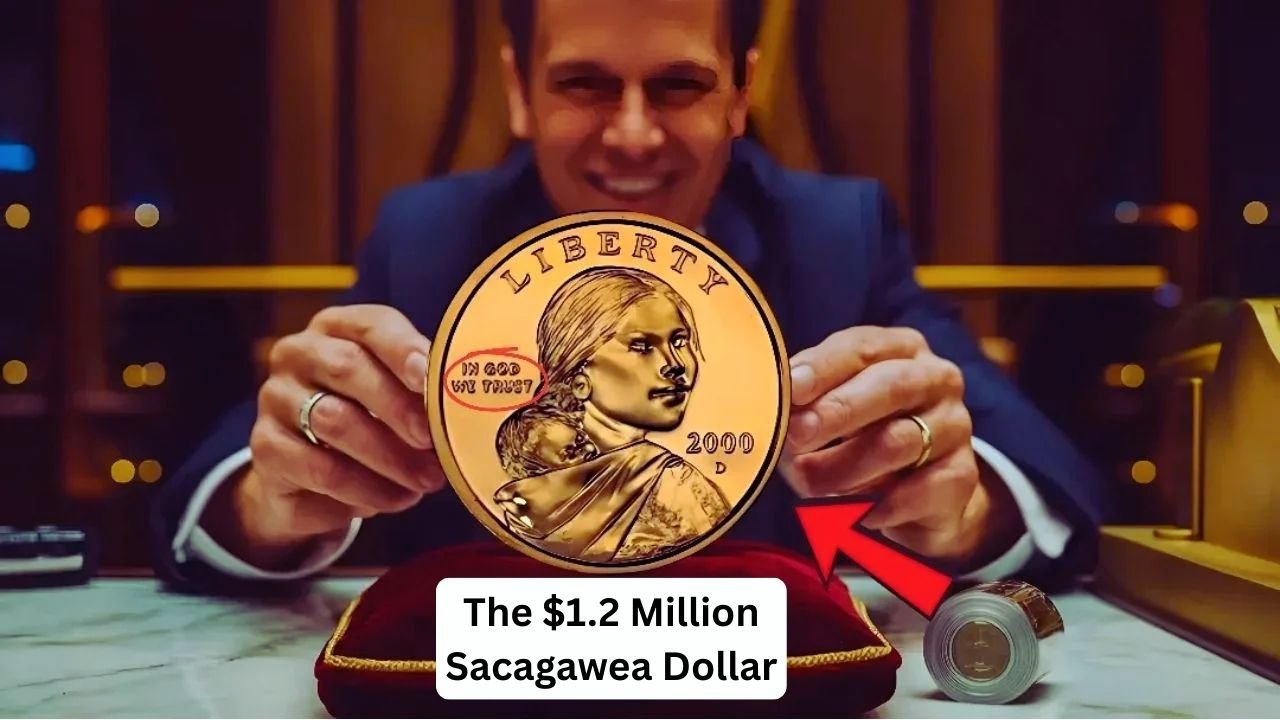A single Sacagawea dollar, once tossed aside as a cheap arcade token, sold for an astonishing $1.2 million at a recent auction, shocking collectors and sparking a frenzy among coin hunters. Introduced in 2000 to honor the Native American woman who guided Lewis and Clark, this golden colored coin was found in a jar of spare change. Its journey from pocket change to a life changing treasure has people everywhere checking their coins, hoping for a similar stroke of luck. But what makes this coin so special, and could another be hiding in your wallet?
The Story Behind the Sacagawea Dollar
The U.S. Mint launched the Sacagawea dollar in 2000 to replace the unpopular Susan B. Anthony dollar. Featuring Sacagawea with her infant son on the front and an eagle on the back, it was meant to catch on for everyday use. But most people ignored it, and millions ended up in storage or collectors hands. The coin was made of manganese brass, giving it a shiny golden look, which some mistook for a token. Its lack of popularity made rare versions even harder to spot.
The Cheerios Coin That Stole the Show
The million dollar coin is a rare 2000-P Sacagawea dollar from a Cheerios promotion. As part of a marketing stunt, the U.S. Mint put these coins in some Cheerios boxes, featuring a unique eagle design with bolder details. Only about 5,500 were distributed, and few stayed in good shape. One lucky finder thought it was just a token until a coin expert spotted its value, leading to its record breaking $1.2 million sale at auction in 2025.
What Makes It Worth So Much?
Several factors drive this coin’s crazy value. Its limited release in Cheerios boxes makes it super rare. The bold eagle design sets it apart from regular Sacagawea dollars. Plus, its near perfect condition boosts its appeal to collectors. Here’s a quick look at its key traits:
| Feature | Details |
|---|---|
| Mint Year | 2000 |
| Mint Mark | P (Philadelphia) |
| Variety | Cheerios issue |
| Material | Manganese brass |
| Estimated Surviving | Fewer than 5,500 |
The auction saw fierce bidding, with collectors calling it a once in a lifetime find.
Another Rare Gem: The Mule Error
There’s also talk of a Sacagawea dollar with a mule error, where the front shows Sacagawea but the back has a Washington quarter design. This mistake, valued at up to $1.2 million, is even rarer, with fewer than 20 known to exist. It happened when mismatched dies were used at the Mint, creating a coin that shouldn’t exist. Spotting one requires checking both sides carefully, as it could pass for a regular quarter.
Top U.S. Coins by Auction Price
To put this in context, the Sacagawea dollar joins an elite group of high value U.S. coins. Here’s a table of some record breakers:
| Coin | Year | Sale Price |
|---|---|---|
| Flowing Hair Dollar | 1794 | $10 million |
| Draped Bust Dollar | 1804 | $4.14 million |
| Sacagawea Mule Error | 2000 | $1.2 million |
These prices show how rare errors or limited runs can turn coins into treasures.
How to Find Your Own Treasure
This story has sparked a coin collecting craze, with people digging through change jars and old cereal box keepsakes. To spot a valuable Sacagawea dollar, check the date for 2000, look for a P mint mark, and note the eagle design. The Cheerios version has a sharper, more detailed eagle. For mule errors, ensure the back matches a Washington quarter. Use a magnifying glass and consult a coin guide or app. If you think you’ve got a winner, get it appraised by a pro at a place like PCGS or NGC. Don’t clean it, as that lowers value.
The $1.2 million Sacagawea dollar proves treasures can hide in plain sight. From a forgotten token to a collector’s dream, it shows how a simple coin can change a life. So next time you grab a handful of change, take a closer look, you might just find a fortune.

